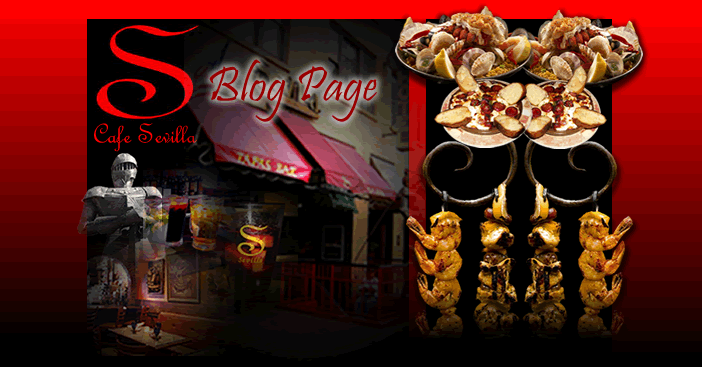The dish most associated with Spain is paella, a rice dish from Valencia on the east coast of Spain, which originated in the 19th century. Most Spaniards consider it to be a regional Valencian dish.
There are three well-known types of paella: paella Valenciana, paella de marisco (seafood paella), and paella mixta. Paella Valenciana traditionally consists of short-grained rice, assorted vegetables, beans, and meat (rabbit, chicken, duck, snails). Seafood paella replaces meat with seafood and omits beans and vegetables. Mixed paella is a free-style combination of meat, seafood, vegetables, and sometimes beans. Many different ingredients can be combined, as the chef chooses. Most paella chefs use calasparra or bomba rice, short-grained plump rice that is higher in starch content and absorbs the different flavors well. Key ingredients include seasonings, saffron, and olive oil.
Bomba rice used for paella |
Paella usually has a layer of toasted rice at the bottom of the pan, called soccarat. This is essential to a good paella and is considered a delicacy in Spain. Soccarat develops on its own if the paella is cooked in the traditional way, over a burner or open fire.
“Paella” is a Catalan word, deriving from the Old French word “paelle,” for pan, which in turn comes from the Latin word “patella” (also meaning pan). Valencians use the word “paella” for all pans, including the specialized shallow pan used for cooking paellas. Paella pans are traditionally round, shallow, and made of polished steel with two handles.
Example of a paella dish |
The Moors first introduced rice to Spain during the eight centuries they ruled the Iberian peninsula. They often made casseroles of rice, fish, and spices for family gatherings and religious feasts. By the time the Spanish Catholics expelled the Muslims in the 15th century, rice had become a staple throughout the country. Along the eastern coast of Spain, these mixed dishes always included fish, which made them popular as a meal for Lent, when eating meat was forbidden.
As living standards in Spain rose during the late 19th century, paella’s ingredients evolved as well, including rabbit, chicken, duck, seafood, and sometimes snails. The dish became so popular that in 1840 a local Spanish newspaper first used the word “paella” to refer to the recipe rather than the pan.
During the 20th century, paella’s popularity spread past Spain’s borders, and the dish acquired regional influences. Paella recipes went from being relatively simple to including a wide variety of seafood, meat, chorizo sausage, vegetables, and many different seasonings. The most globally popular recipe is seafood paella.
Large paella for a party |
Paella has become a customary party dish at mass gatherings in the Valencian community, such as festivals and other public events, where chefs use huge paella pans to feed thousands of people. According to the Guinness Books of World Records, the largest paella ever was made by Valencian restaurateur Juan Galbis and a team of workers on March 8, 1992, and fed about 100,000 people. Galbis claims to have broken this record on October 2, 2001, by making a paella that fed 110,000 people.






I make paella at home with saffron lemon juice and zest parsley salt and hot sauce onion garlic peas shrimp and spicy sausage or chicken. The marinade is the most delicious mouth watering aromatic that will draw hungry people and men to ur door lol. Husband goes nuts when I made it for him.
ReplyDeleteI completely agree, It is great. And I am always surprised when I read posts about the food. This great content. I have learned something powerful today.online food delivery app development
ReplyDelete